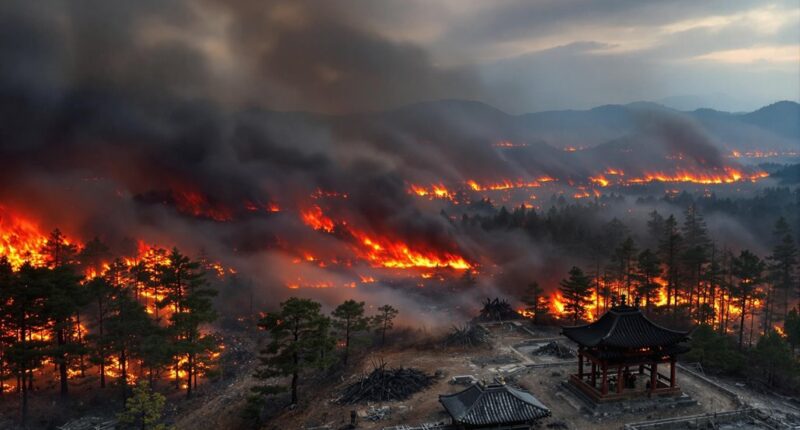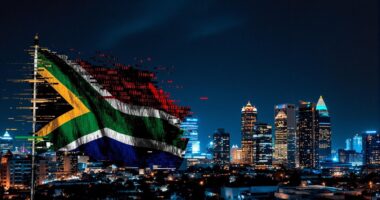South Korea is battling devastating wildfires that began March 21, 2025, spreading across 48,000 hectares. The blazes have claimed between 24-30 lives, including firefighters, and injured at least 19 people. Over 37,000 residents evacuated as flames destroyed 6,000+ structures, including the historic Gounsa Temple. Human error likely sparked the initial blaze, with drought and strong winds fueling its rapid spread. Recovery efforts continue as climate change raises concerns about future disasters.
As fierce winds swept across South Korea in March 2025, the nation faced its most devastating wildfires in recorded history.
The disaster began on March 21, quickly spreading across more than 48,000 hectares of land. Strong gale-force winds pushed flames through North Chong and Weong County at alarming speeds, forcing authorities to declare a national emergency.
South Korea’s acting president mobilized all available resources as the inferno expanded through bone-dry landscapes. The combination of drought conditions and powerful winds created a perfect storm for disaster. Experts point to climate change as a key factor in creating the tinderbox conditions that allowed the fires to spread so rapidly and with such intensity.
Climate change fueled the perfect storm of drought and winds that turned South Korea into a tinderbox of destruction.
Early investigations suggest human error likely sparked the initial blaze, though the exact cause remains under investigation. Investigators found evidence suggesting one fire originated from sparks from a brush cutter. What began as a localized incident quickly escalated into a national crisis as containment efforts struggled against the wind-driven flames. Firefighters battled around the clock but faced overwhelming odds against the advancing fire line.
The human toll has been devastating. Between 24 and 30 deaths have been confirmed, with figures varying between official sources. Among the casualties were several brave firefighters and a helicopter pilot who died during containment operations. At least 19 people suffered injuries, many while attempting to protect homes and communities.
More than 37,000 residents fled their homes as evacuation orders expanded across multiple regions. Many left with only the clothes on their backs, uncertain if they would have homes to return to. Entire communities now face the formidable task of rebuilding from nothing but ash and rubble.
The cultural loss has been equally catastrophic. The historic 7th-century Gounsa Temple, a treasured Buddhist site, was completely destroyed. Irreplaceable artifacts and ancient relics vanished in the flames. Over 6,000 structures were lost to the fire, including homes, businesses, and historical buildings that stood for centuries.
Recovery efforts are now underway, but the scale of destruction presents enormous challenges. More than 10,000 emergency personnel have been working tirelessly since the disaster began, risking their lives to save others and control the blaze. Displaced families are living in temporary shelters while authorities work to restore basic services to affected areas.
The economic impact will likely be felt for years to come, with damage estimates still being calculated. Environmental experts warn that this catastrophe may represent a new normal if climate change continues unabated.
The unprecedented scale and intensity of these fires serve as a stark reminder of changing weather patterns and their devastating consequences.
As South Korea begins the long process of healing and rebuilding, the nation mourns not just the lives lost but also the destruction of cultural heritage and natural landscapes that can never truly be replaced.
Conclusion
South Korea faces a long recovery as the nation’s deadliest wildfires in years continue to challenge emergency services. Officials have promised aid for displaced families and better prevention measures for the future. With dozens of lives lost and thousands homeless, the disaster serves as a stark reminder of climate change’s growing impact on the region. Communities are now coming together to rebuild what’s been lost.








